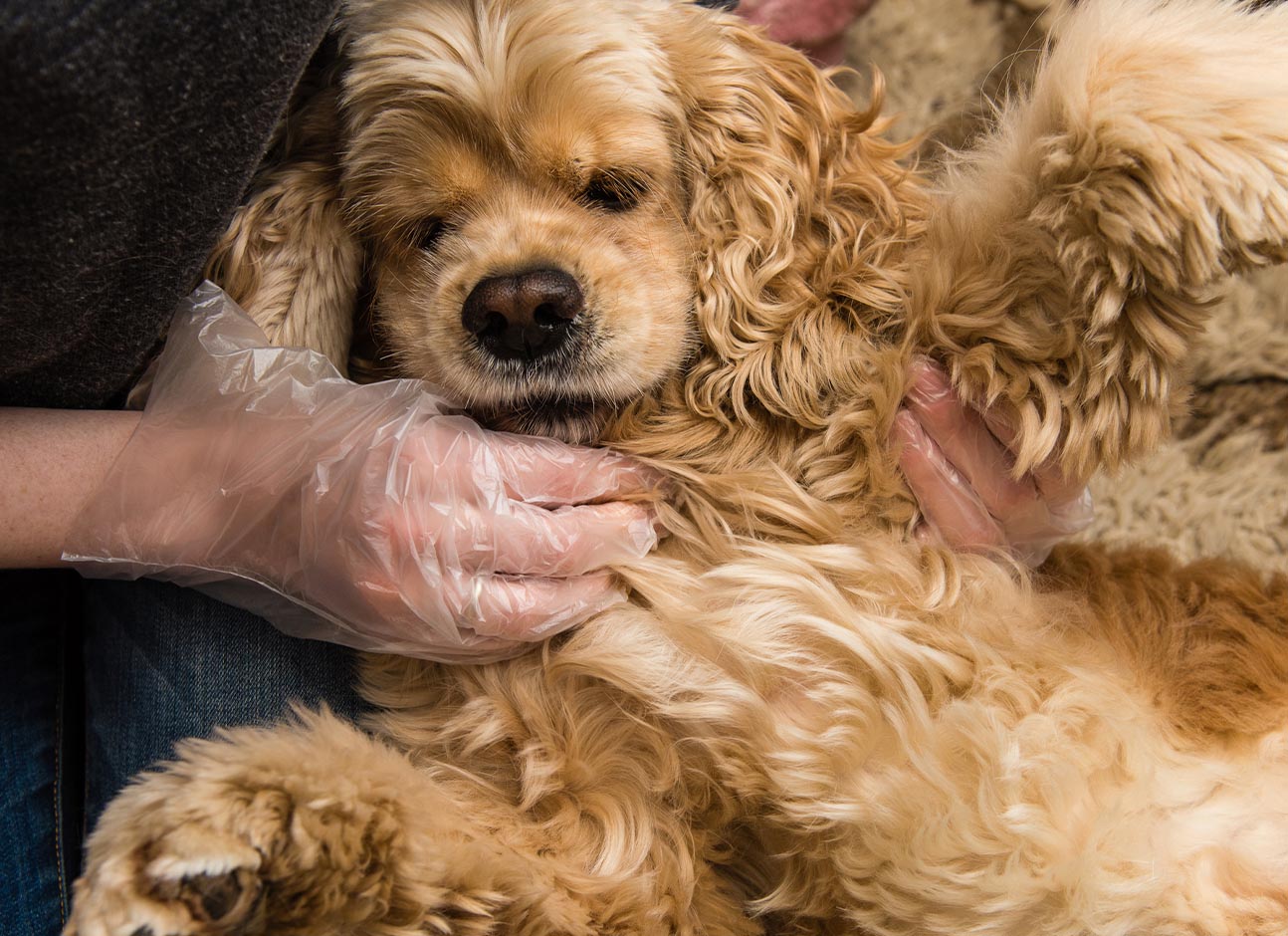Causes of Infection
Various factors can cause liver disease in dogs, including fungal pathogenic spores found in sand, grass, etc., which can lead to ringworm. Parasitic insects, rats, and mice are also potential carriers, as well as contact with infected pets. Pink lichen is caused by pathogenic microorganisms and has an infectious allergic nature. In contrast, weeping lichen is an allergic reaction.
Factors that increase the risk of lichen in animals include:
Poor hygiene
Inadequate living conditions, such as excessive moisture, stuffiness, or ventilation problems
Genetic predispositions to tinea versicolor
Weakened immune system
Higher risk in long-coated pets due to poor skin ventilation
Symptoms
The primary symptom of lichen is intense itching, causing constant discomfort and behavioral changes. Visible signs include bald areas, crusts, vesicles, peeling, and swelling on the skin. Since symptoms resemble allergies, only an experienced veterinarian can accurately diagnose lichen.
Types of Lichen
Lichen types in dogs and their main symptoms include:
Ringworm form: A severe and highly contagious disease caused by pathogenic fungal spores. Symptoms appear within days to weeks and include apathy, weakened appetite, red bumps, bald areas, and skin discoloration. If left untreated, it can spread and cause sepsis.
Weeping form: An allergic skin reaction characterized by increased temperature in affected areas, painful bumps, and hair loss. It starts on the neck, cheeks, and tailbone and can spread to the entire body if not treated.
Rose form: Caused by viruses and bacteria due to a weakened immune system during an infectious disease. Symptoms include pink areas, peeling, itching, and a risk of secondary infection. This form can become chronic if not treated.
Tube-like form: Caused by yeast fungi, this form is not dangerous for healthy animals. It can resolve on its own but often becomes chronic without treatment.
In rare cases, subcutaneous or herpes zoster form may occur due to herpes viruses. Without treatment, it can spread to the entire pet.
Diagnosis Methods
Diagnostic methods include using a Wood lamp to examine the skin, analyzing skin and coat scrapings under a microscope, and culturing samples, which is the most accurate but time-consuming method.
Treatment
Accurate diagnosis is essential for selecting the appropriate treatment. Common aspects of treatment include addressing symptoms, removing disease causes, preventing secondary diseases, protecting against secondary infections, and using immunostimulants. If ringworm is diagnosed, isolate the pet and thoroughly disinfect everything it has contacted.
In mild cases, topical medications like sprays and ointments are usually sufficient. In more severe cases, antifungal drugs and, if bacterial infections occur, specific antibiotics in injection or tablet form may be required. A protective collar is recommended to prevent pets from licking off the medication.
Danger for Humans
Only the ringworm form is contagious to humans. Prevention is more manageable than treating the consequences.
Prevention
To prevent liver disease in dogs, take the following precautions:
Avoid contact with sick or stray pets
Timely treatment of diseases to maintain a healthy immune system
Regular hygiene maintenance
Use hypoallergenic food for dogs prone to allergies
Vaccination
Annual vaccines against certain lichen forms are available. Regular check-ups can help detect diseases at an early stage.
Protect your pet’s skin and coat health. Explore our comprehensive Dermatology services today.
